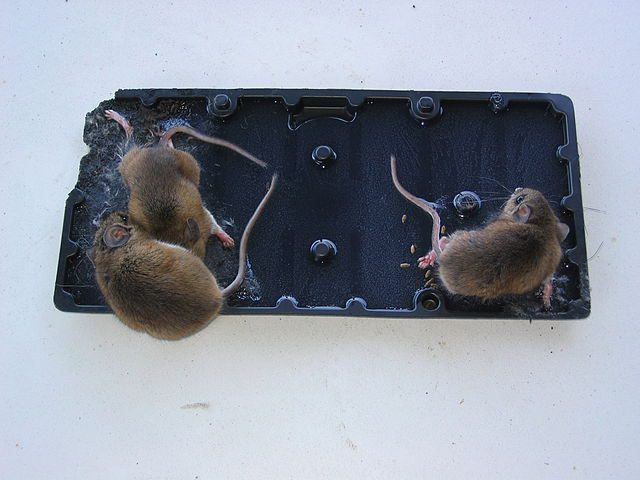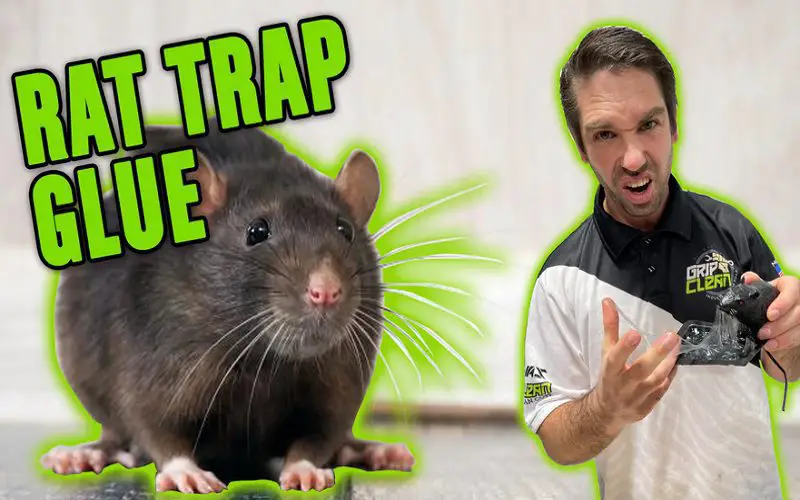To remove mouse trap glue, use vegetable oil or cooking oil to gently massage the affected area. Then, wash the skin with soap and water.
Dealing with mouse trap glue can be a sticky situation. Whether it’s on your skin or on surfaces, knowing how to effectively remove the adhesive is essential. We’ll explore simple yet effective methods to get rid of mouse trap glue safely and efficiently.
You’ll learn how to tackle this common nuisance using household items and avoid any unnecessary frustration. So, let’s dive in and discover the best ways to remove mouse trap glue without any hassle.
Contents
Introduction To Mouse Trap Glue Removal
Removing mouse trap glue can be a sticky situation, but with the right techniques, it can be done effectively. Whether you have accidentally touched the glue or need to clean up after catching a critter, quick removal is key to prevent further mess and damage.
Why Quick Removal Is Essential
- Prevents spread: Quick removal stops the glue from spreading to other surfaces.
- Minimizes damage: Rapid action reduces the chance of the glue causing permanent stains.
- Easier cleanup: Fresh glue is easier to remove than dried, hardened glue.
Safety Precautions
- Protective gear: Wear gloves to avoid direct contact with the glue.
- Ventilation: Work in a well-ventilated area to avoid inhaling fumes.
- Proper disposal: Dispose of glue and cleaning materials safely to prevent harm to the environment.
Common Types Of Mouse Trap Glue
When dealing with a mouse infestation, choosing the right type of glue trap is crucial for effective pest control. There are two common types of mouse trap glue: pre-made sticky traps and DIY glue traps.
Pre-made Sticky Traps
Pre-made sticky traps are ready-to-use products that come with adhesive already applied to the surface. These traps are convenient and easy to set up, making them a popular choice for homeowners. When a mouse comes into contact with the adhesive, it becomes stuck and unable to escape.
Diy Glue Traps
DIY glue traps involve using adhesive materials to create custom mouse traps. This method allows for flexibility in trap size and shape, catering to specific pest control needs. DIY glue traps can be made using household items such as cardboard, plastic, or wooden boards coated with a strong adhesive substance.
Materials Needed For Glue Removal
To remove mouse trap glue, you will need a few materials. Grab a pair of gloves, a plastic scraper, rubbing alcohol, warm soapy water, and a clean cloth. These supplies will help you effectively remove the sticky residue without causing any damage.
Household Items
- Vegetable oil: Loosens glue for easier removal.
- Vinegar: Helps dissolve the adhesive.
- Warm water: Aids in softening the glue.
- Cloth or sponge: For application and wiping off.
Protective Gear
- Gloves: Shield hands from chemicals.
- Eye protection: Prevents irritation from splashes.
- Masks: Guards against inhaling fumes.
Method 1: Oil-based Solutions
One effective method to remove mouse trap glue is to use oil-based solutions. You can use cooking oils such as vegetable or olive oil, apply it on the glue and let it soak for a few minutes. Afterward, use a cloth to wipe away the glue residue.
When it comes to removing mouse trap glue, using oil-based solutions can be an effective and safe method. Here are two options you can try:
Using Cooking Oil
If you’re looking for a natural and readily available solution, cooking oil can come to your rescue. Follow these simple steps:
- Start by placing a few drops of cooking oil directly onto the glue stain.
- Allow the oil to penetrate the glue for a few minutes.
- Using a clean cloth or paper towel, gently rub the area in circular motions.
- Continue rubbing until the glue begins to loosen and come off.
- Wipe away any remaining oil and glue residue with a damp cloth.
This method works because the oil helps to break down the adhesive properties of the glue, making it easier to remove.
Commercial Adhesive Removers
If you prefer a more specialized product, there are various commercial adhesive removers available in the market. These removers are specifically designed to dissolve and eliminate sticky substances like mouse trap glue. Here’s how to use them:
- Read the instructions provided on the adhesive remover product carefully.
- Apply the adhesive remover directly onto the glue stain.
- Allow the remover to sit on the glue for the recommended amount of time.
- Gently scrub the area with a cloth or sponge to help loosen the glue.
- Wipe away the dissolved glue and residue with a clean cloth.
Remember to follow the safety precautions mentioned on the product label and ensure proper ventilation when using commercial adhesive removers.
By using either cooking oil or a commercial adhesive remover, you can effectively remove mouse trap glue without damaging surfaces or causing any harm.
Method 2: Warm Soapy Water
To remove mouse trap glue, try using warm soapy water. Gently soak the affected area, then use a cloth or sponge to scrub away the adhesive residue. This method is effective and easy to do at home.
Method 2: Warm Soapy Water is another effective way to remove mouse trap glue. This method involves preparing a solution of warm soapy water and applying it to the affected area. Here are the steps you need to follow to use this method effectively.
Preparing The Solution
To prepare the solution, you need to mix warm water with a mild dish soap. Take a bowl and fill it with warm water. Add a few drops of dish soap to the bowl and stir the solution well. Ensure that the soap is evenly mixed with the water.
Application Technique
Once you have prepared the solution, you need to apply it to the affected area. Take a soft cloth or sponge and dip it into the warm soapy water solution. Wring out the excess water and place the cloth on the glue.
Press it firmly and hold it in place for a few minutes. The warm soapy water solution will help loosen the glue from the surface. After a few minutes, gently wipe the affected area with the cloth. If the glue is still sticky, repeat the process until the glue is removed completely.
Do not use excessive force to remove the glue as it can damage the surface. In conclusion, using warm soapy water is an effective way to remove mouse trap glue. By following the steps mentioned above, you can remove the glue without damaging the surface. Try this method if you want a safe and easy way to remove the glue.

Method 3: Ice Pack Application
To remove mouse trap glue, apply an ice pack to the affected area for 5-10 minutes. The cold temperature helps solidify the glue, making it easier to peel off without harming your skin.
Removing mouse trap glue can be a sticky situation, but fear not! With the ice pack application method, you can effectively tackle this challenge. By freezing the glue, you’ll make it less adhesive and easier to remove. Let’s dive into the step-by-step process.
Freezing The Glue
Start by grabbing an ice pack from your freezer. Ensure it’s cold and solid before proceeding. Place the ice pack directly on the mouse trap glue and press it firmly for a few minutes. The cold temperature will harden the glue, making it less sticky and more manageable.
Scraping Off The Glue
Once the glue has been frozen, take a plastic scraper or a credit card and carefully scrape off the hardened glue. Apply gentle pressure and work in small sections to avoid damaging the surface underneath. Continue scraping until all the glue has been removed.
In summary, the ice pack application method is an effective way to remove mouse trap glue. Freezing the glue with an ice pack and then scraping it off with a plastic scraper or credit card allows for a quick and efficient removal process.
Remember to exercise caution while scraping to prevent any unintended damage. With this method, you’ll bid farewell to the pesky mouse trap glue in no time.
Aftercare And Cleanup
After removing a mouse trap glue, it’s essential to focus on aftercare and cleanup to ensure a safe and hygienic environment. Proper cleaning and disposal of the glue residue are crucial steps to prevent any potential hazards. Let’s explore the necessary aftercare measures and cleanup procedures in detail.
Cleaning The Affected Area
Begin by gently applying vegetable oil or cooking oil to the affected area to help loosen the glue. Allow the oil to sit for a few minutes to soften the adhesive. Then, carefully peel off the glue from the surface using a blunt tool such as a plastic scraper or old credit card.
Disposing Of Glue Residue
Once the majority of the glue has been removed, use a damp cloth or sponge to wipe the area and remove any remaining residue. Dispose of the cloth or sponge in a sealed plastic bag to prevent the spread of contamination. Then, wash the affected area with mild soap and water to eliminate any leftover oil or adhesive.
Prevention Tips
To remove mouse trap glue, start by applying vegetable oil or baby oil to the affected area and allowing it to sit for a few minutes. Then, gently peel off the glue using a plastic scraper or old credit card. Finally, clean the area with soapy water to remove any remaining residue.
Avoiding Future Incidents
Preventing future incidents involving mouse trap glue is crucial to maintaining a pest-free environment. Follow these practical tips to minimize the risk of encountering rodent glue traps in the future:
- Seal Entry Points: Ensure all potential entry points for rodents are sealed, including gaps around doors and windows, holes in walls, and openings around pipes and cables.
- Keep Food Secure: Store food in airtight containers and clean up spills promptly to eliminate potential food sources that attract rodents.
- Regular Cleaning: Maintain a clean and clutter-free environment to reduce potential hiding spots for rodents.
- Inspect Regularly: Conduct routine inspections of your property to identify and address any signs of rodent activity promptly.
Alternative Rodent Control Methods
Aside from traditional mouse trap glue, there are several alternative methods for controlling and preventing rodent infestations. Consider the following options as effective alternatives to mouse trap glue:
- Snap Traps: Utilize snap traps with bait to capture and eliminate rodents effectively.
- Ultrasonic Repellents: Use ultrasonic devices to deter rodents through sound frequencies that are unpleasant to them.
- Natural Deterrents: Employ natural deterrents such as peppermint oil or predator urine to discourage rodents from entering your property.
- Professional Extermination: Seek assistance from professional pest control services for comprehensive rodent removal and prevention strategies.
Frequently Asked Questions
What Will Dissolve Mouse Trap Glue?
Use vegetable oil or coconut oil to dissolve mouse trap glue effectively. Apply the oil generously and let it sit before gently wiping away the glue residue.
Can You Unglue A Mouse From A Glue Trap?
Yes, you can unglue a mouse from a glue trap by using vegetable oil or warm soapy water.
Will Goo Gone Remove Mouse Trap Glue?
Yes, Goo Gone is effective in removing mouse trap glue. It is specially formulated to remove sticky messes and residues from various surfaces, including traps.
Apply a small amount of Goo Gone onto the glue, let it sit for a few minutes, and then wipe it off with a clean cloth.
How To Remove Glue Off Mouse?
To remove glue off a mouse, use rubbing alcohol on a cotton swab to gently wipe the affected area. You can also try using a small amount of nail polish remover on a cotton ball. Be sure to clean the mouse thoroughly with a damp cloth afterward.
Conclusion
Removing mouse trap glue is not a daunting task if you follow the right steps. You can use household items like vegetable oil, vinegar, or rubbing alcohol to dissolve the glue. However, it’s essential to be cautious while handling the trap to avoid any injuries.
By using the methods mentioned in this post, you can safely remove the glue from your skin or any other surface. Remember to wear gloves and work in a well-ventilated area for optimal results.

